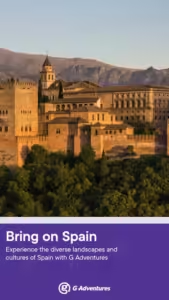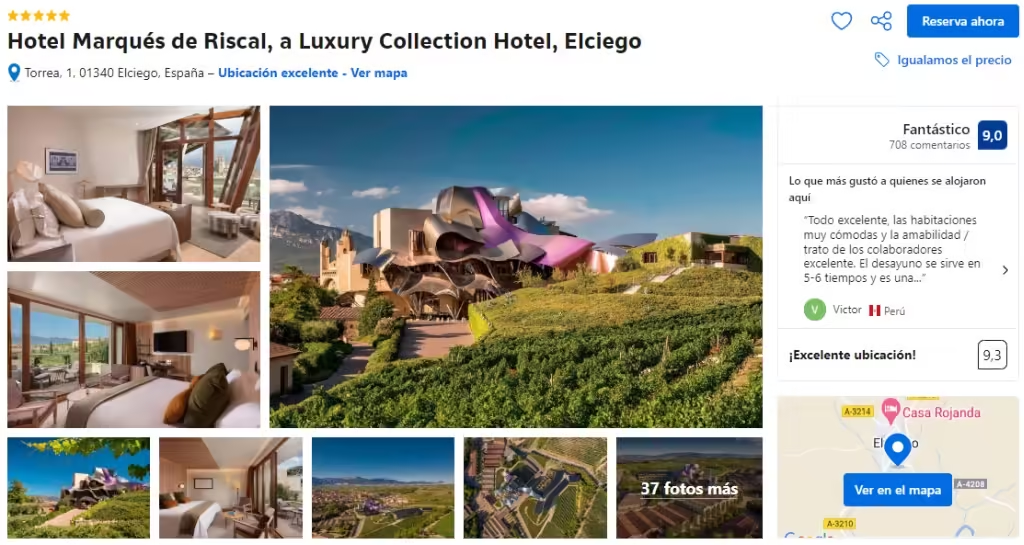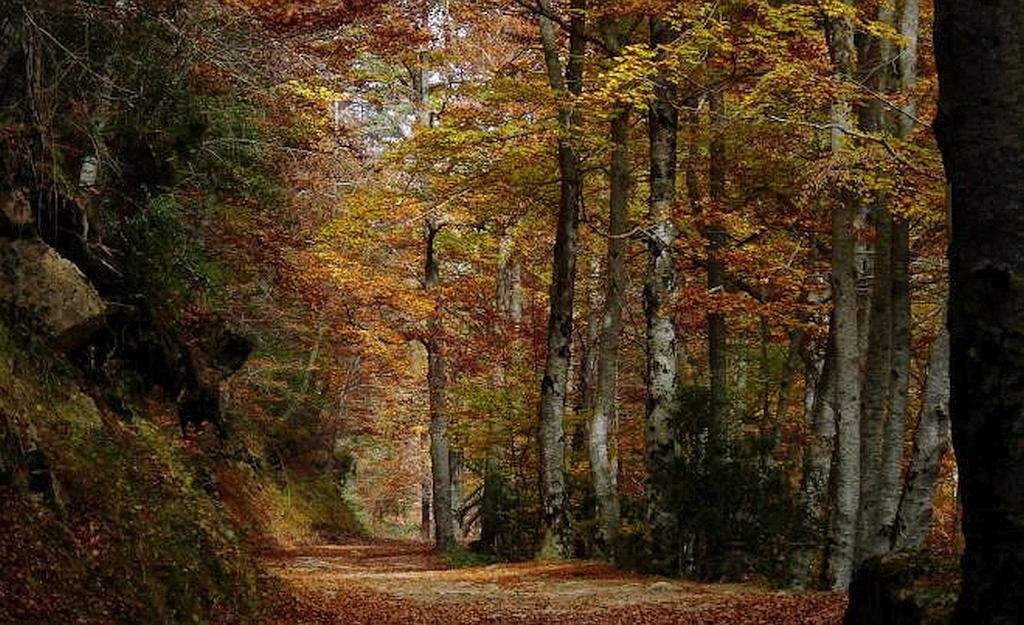Walking and wildlife holidays in La Rioja
- Capital: Logrono.
- Area: 5,045 km²

Most famous as the origin of its world-renowned wines, La Rioja is a region of exceptional ecological diversity, located in northern Spain.
This area features fertile plains nourished by the Ebro River in the north, where vineyards flourish in rich soil under a mix of Mediterranean and Atlantic climates.
To the south, the rugged landscapes of the Sistema Central mountain range create a natural boundary and bring dramatic variation in climate, ecology, and scenery.
La Rioja’s climate is a study in contrasts. In the mountainous areas, rainfall is more frequent and temperatures are cooler, creating conditions that support unique plant and animal life.

The lower plains, however, are drier and experience warmer temperatures, offering an arid environment that lends itself to distinctive vegetation types.
This climatic variation significantly shapes the biodiversity and agricultural practices of the region, from the lush vineyards in the valleys to the hardy flora of the mountains.
Mountain Landscapes and Glacial Remnants
In the higher regions, particularly the Sierra de Cebollera, glacial formations have sculpted the landscape over millennia. Valleys and cirques bear the marks of ancient glaciers, creating strikingly beautiful terrain of rocky slopes, deep valleys, and expansive meadows. At these altitudes, plant life must endure extreme conditions, including snow, ice, and the powerful winds that sweep through the mountains. Species here have adapted to survive in harsh environments, contributing to La Rioja’s rich natural tapestry.
Diverse Woodlands of La Rioja
La Rioja’s forests are home to a variety of oak species that reflect the region’s diverse microclimates. The lower elevations are dominated by holm oak woodlands, a drought-resistant tree suited to the warmer, drier plains. Moving up in elevation, Pyrenean oak and Atlantic oak thrive in more temperate areas, providing shade and habitat for a variety of wildlife. At the highest altitudes, the cooler and wetter climate supports beech forests, creating a patchwork of woodlands across the mountain slopes. This variety of tree species, from oaks to beech, adds both ecological richness and scenic beauty to the landscapes of La Rioja.
Pilgrims walking the Camino de Santiago (Way of Saint James) cover a 60km route through La Rioja, including the capital Logrono.
Hotel Marqués de Riscal
The stunning Hotel Marqués de Riscal, a Luxury Collection Hotel, is located in Elciego in La Rioja’s Álava province. Designed by Frank Gehry, this avant-garde hotel offers free WiFi, a spa and 2 restaurants.

Check out prices and availability for the Hotel Marqués de Riscal over at booking.com
The Paleontology Centre of Enciso
In the town of Enciso and installed in an old shoe factory, this interpretation centre is dedicated to the investigation of the dinosaur remains in La Rioja. See the website here in Spanish http://centropaleontologicodeenciso.org/
Tours in La Rioja from Viator
La Rioja has a vast array of sites to visit and enjoy. Below are some of the options listed on the Viator website. (We receive a small commission if you book a tour which doesn’t cost you more and helps us to keep Wildside Holidays up to date with the best information.)
Natural parks in La Rioja

1 Sierra de Cebollera Natural Park The only designated natural park in the region of La Rioja, the Sierra de Cebollera Natural Park is located on the northern slope of the mountains of the Iberian System about 50 kilometres from Logroño. It is also part of the Sierras de Demanda, Urbión, Cebollera and Cameros special protection areas for birdlife (Zonas de Especial Protección para las Aves (ZEPA)
Valles de Leza – Jubera – Cidacos and Alhama Biosphere Reserve
The Valles de Leza – Jubera – Cidacos and Alhama Biosphere Reserve is located in the south eastern part of La Rioja. A mountainous area, the highest peaks reach around 1,600 meters. There are around 180 paleontological sites in the area and in some places, well preserved dinosaur tracks.
Read more about the Valles de Leza – Jubera – Cidacos and Alhama Biosphere Reserve: https://wildsideholidays.co.uk/valles-de-leza-jubera-cidacos-and-alhama-biosphere-reserve/
Another interesting aspect of La Rioja are the abandoned villages as this interesting documentary (in Spanish) shows.
Other protected and areas of interest
- Reserva Natural de los Sotos de Alfaro No trip to the region of La Rioja would be complete without a visit to the Reserva Natural de los Sotos de Alfaro and the town of Alfaro (The city of storks) that holds a huge colony of white storks. The proximity of the Sotos del Ebro Natural Reserve, the baroque architecture of the Collegiate Church of San Miguel and the protection and pride of the towns inhabitants, provide the storks with an incomparable place that makes this the largest colony in the world of white storks on a single edifice.
- Lagunas de Urbión In February 2006 the urbión lagoons became part of the List of Wetlands of International Importance (Ramsar)
- Laguna de Hervías The Laguna de Hervías is a small natural endorheic lagoon (Mediterranean temporary pond) that occupies about 15 hectares of surface and is located in the municipality of Hervías near Santo Domingo de la Calzada.
Looking for guided or self guided walking in La Rioja?

Walking North Spain are located in San Sebastian in the heart of a fantastic area for holidays and mountain travel, trips and routes are arranged in most of northern Spain (Basque Country, Navarra, Western Pyrenees, La Rioja, Picos de Europa…), as well as in the French Basque Country and the French Pyrenees. https://wildsideholidays.co.uk/walking-north-spain/
FAQ: Walking and Wildlife Holidays in La Rioja
La Rioja, in northern Spain, features fertile river plains in the north and rugged mountains in the south. The Ebro River nourishes vineyards, while the Sierra de Cebollera range shows glacial formations, adding dramatic contrast to the region’s terrain.
Cool, rainy mountains support unique flora and fauna. In contrast, dry, warm plains suit vineyards and drought-resistant plants. This climate mix shapes La Rioja’s rich biodiversity and thriving agriculture.
Forests vary by altitude: holm oaks in dry lowlands, Pyrenean and Atlantic oaks in mid-elevations, and beech trees in cooler, wetter highlands. This woodland diversity adds to the region’s ecological richness.
Yes. A 60 km stretch of the Camino passes through La Rioja, including Logroño. It’s a popular cultural route for walkers and pilgrims.
Sierra de Cebollera Natural Park – The region’s only official park, with birdlife protections.
Valles de Leza – Jubera – Cidacos and Alhama Biosphere Reserve – Known for dinosaur tracks and mountain scenery.
Sotos de Alfaro – Home to the world’s largest white stork colony on a single building.
Lagunas de Urbión (Ramsar site) and Laguna de Hervías – Important wetlands for wildlife.
Yes. The region has about 180 paleontological sites. Many tracks are found in the Valles de Leza Reserve. The Paleontology Centre in Enciso explores this fossil heritage.
Absolutely. The Hotel Marqués de Riscal in Elciego, designed by Frank Gehry, offers luxury stays with a spa, gourmet dining, and vineyard views.
Try walking and wildlife tours, visit dinosaur museums, hike in natural parks, or explore villages and wetlands. Companies like Walking North Spain and platforms like Viator offer diverse tour options.
About the author of this article.
I’ve been living in this lovely area of Western Andalucia for the last 20 years or so and dedicate most of my time to the running of English language tourist information websites for the towns of Cádiz, Ronda, Grazalema, the famous or infamous Caminito del Rey, and also Wildside Holidays, which promotes sustainable and eco-friendly businesses running wildlife and walking holidays in Spain.

